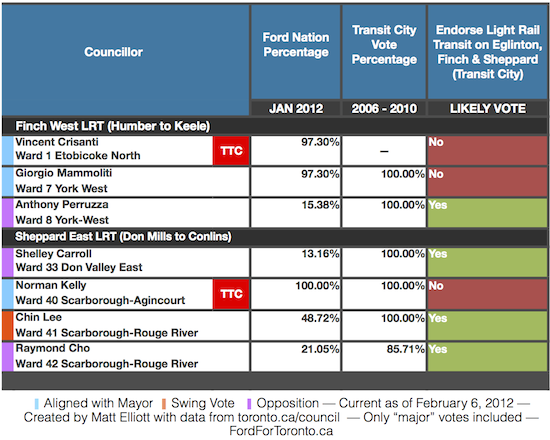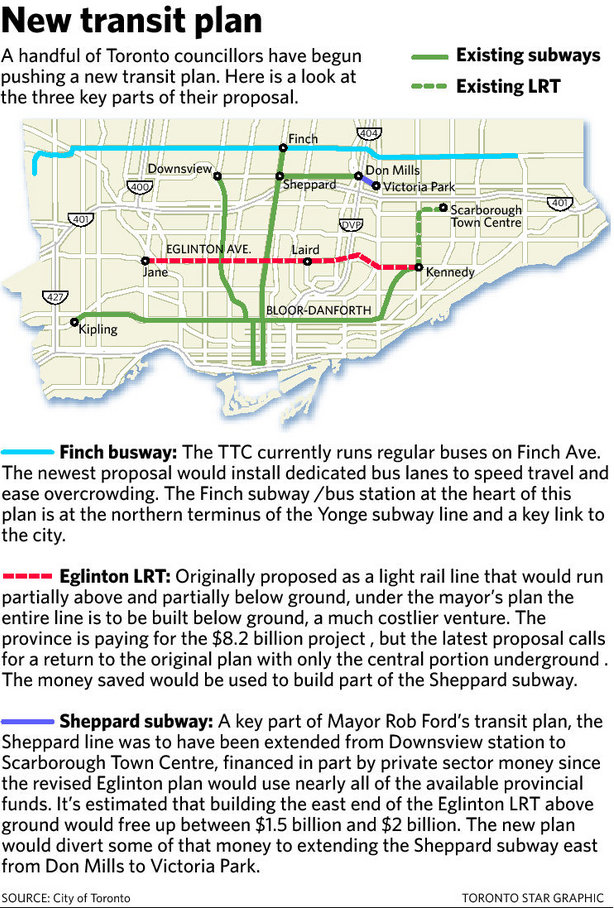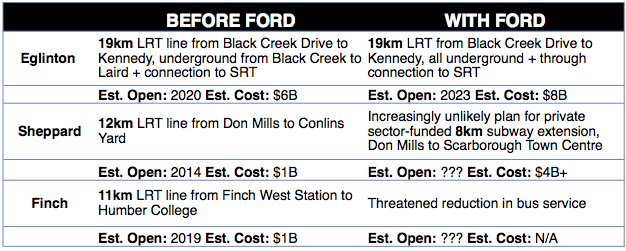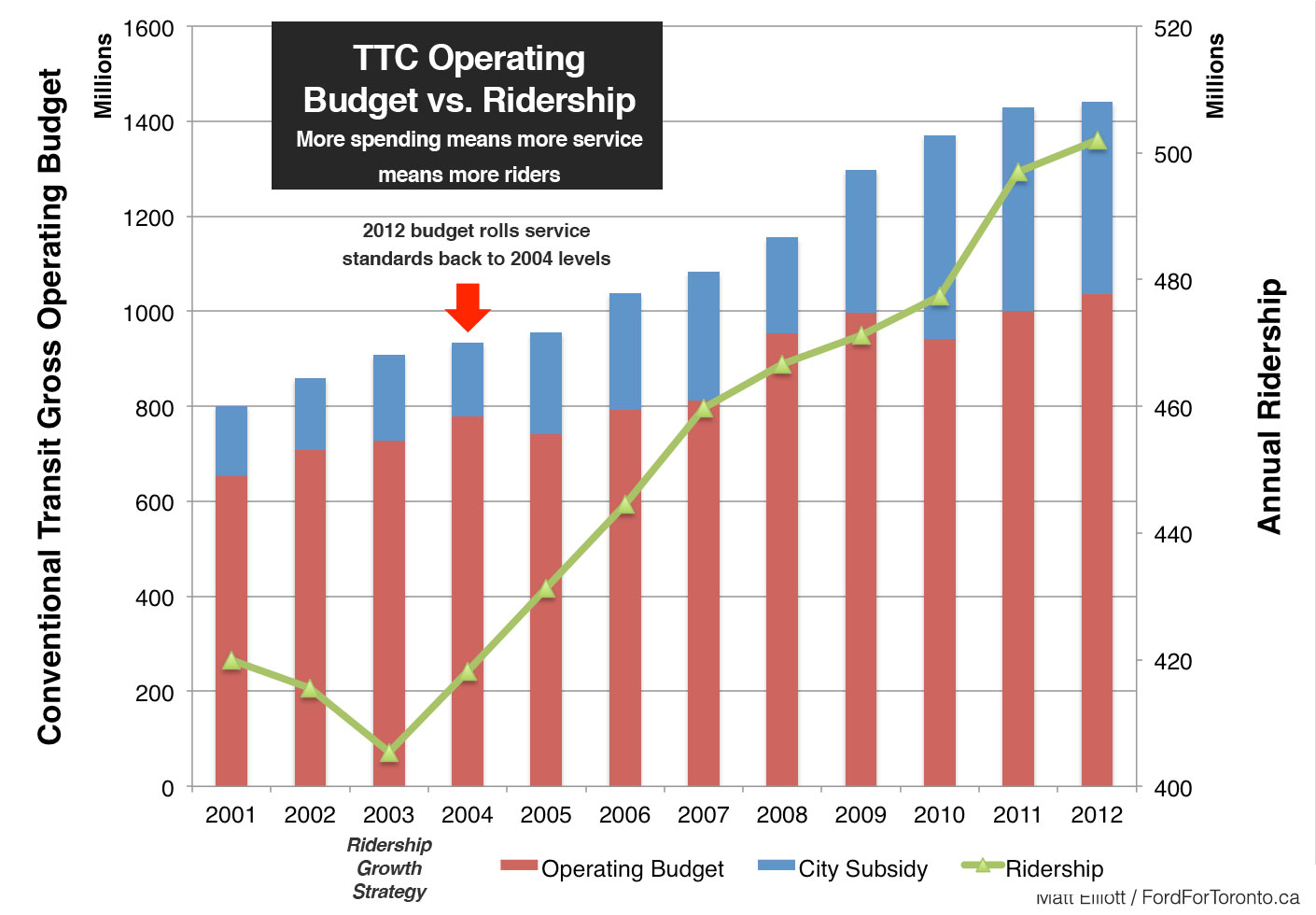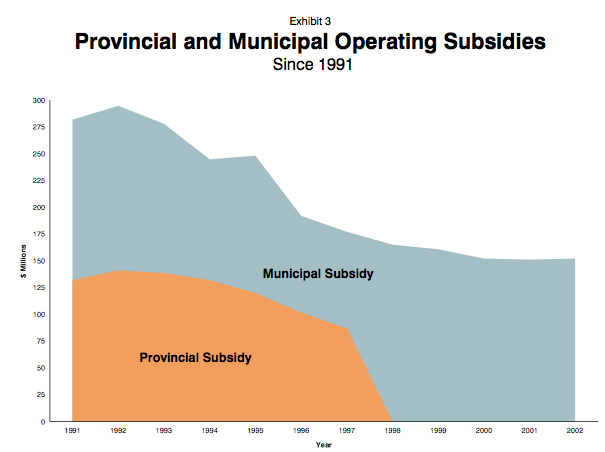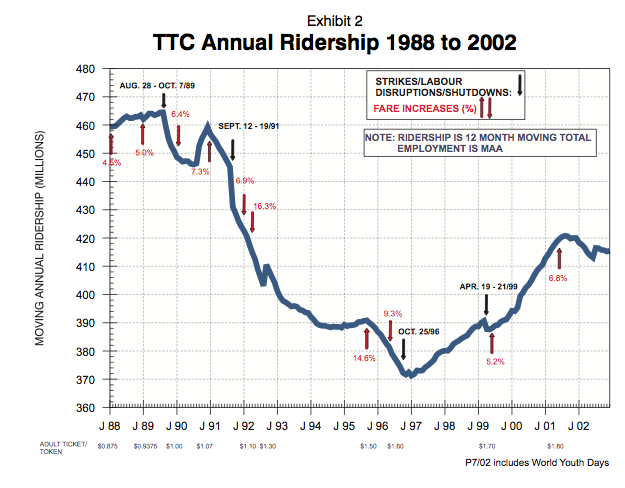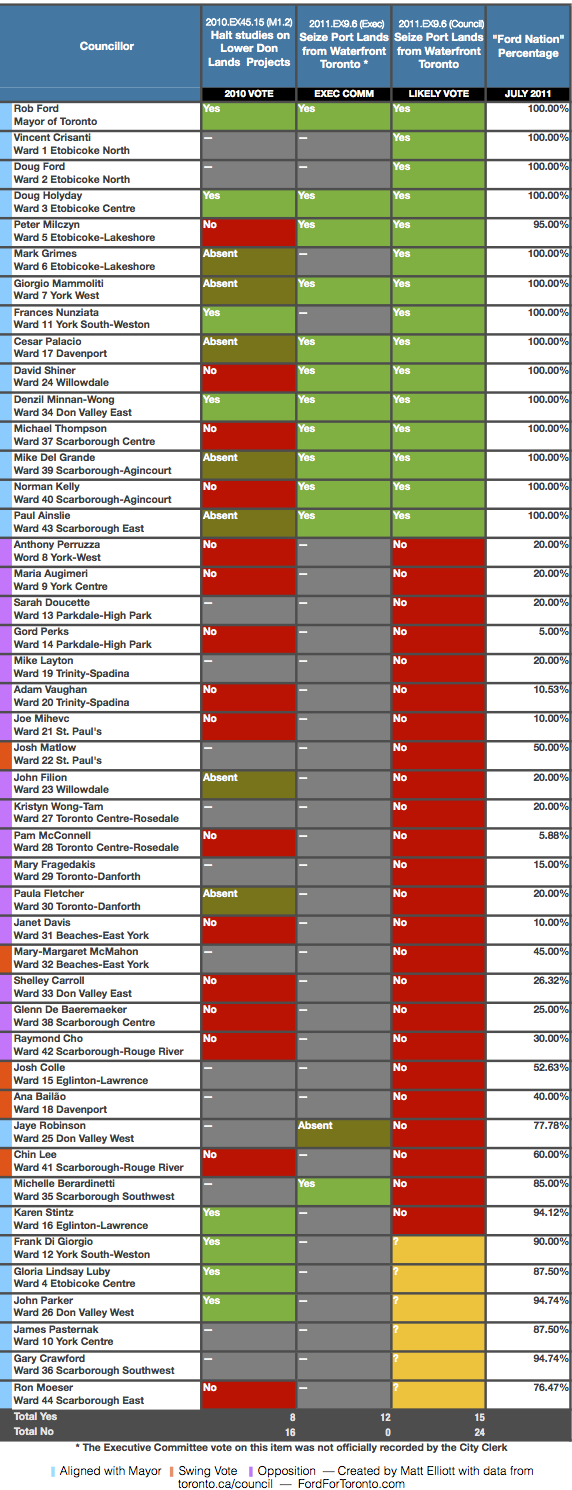As expected, the TTC board formally released General Manager Gary Webster from his contract yesterday after a 5-4 vote. This is widely regarded as a dumb move.
The Globe & Mail’s Marcus Gee:
Mr. Webster is being fired just days after a public meeting in which he spoke his mind, in the most calm and respectful manner, about his views on the best way to expand Toronto’s transit network. Those views differ sharply from the mayor’s.
Firing him now reeks of spite. It confirms what many people already feel about the mayor’s blunderbuss, my-way-or-the-highway approach to governing the city. It conflicts with the mayor’s pledge to cut waste. Firing Mr. Webster only a year and a bit before the end of his contract could cost the city $500,000 and more.
Worse, it sets a dangerous precedent that could intimidate the other leading public servants who advise the mayor and city council on public policy.
via Shameful firing further alienates Mayor Ford | The Globe and Mail.
In addition to the cost and the dangerous precedent this sets, this move is ridiculously hasty and ill-timed. Even Deputy Mayor Doug Holyday has acknowledged that it doesn’t make sense to fire the most important civil servant at the TTC when you have no workable strategy for replacing him. The commission will likely spend a year (or more) trying to find a permanent replacement, through which time management will undoubtedly suffer due to a lack of leadership.
Webster was going to retire in a year anyway. Instead of just waiting that out, the city gets to dole out $500,000 in severance payments, deal with a difficult period of managerial change and — oh yeah — live with the consequences of being a crappy employer with a reputation for firing people without just cause.
There’s no way to sugar-coat that last part. The motion passed at the meeting was clear: Webster was fired without just cause. For no reason.
The timing of this also sucks for Ford’s policy ambitions — assuming he has any left. Had the mayor waited and made a move against Webster later this year, this would have felt a lot less petty and vindictive. He would have been able to retain more support from allies, especially as council as a whole would have moved on from the contentious LRT/subway debate and onto other issues. As it is, Ford’s move to oust Webster has only hardened the conviction of previously “mushy middle” councillors who have spoken out against his agenda in recent months. Worse, it’s also put significant strain on the loyalties of at least three councillors who had been, up until recently, critical and vocal supporters of the mayor’s agenda.
There’s no political calculus that says firing Gary Webster was worth potentially alienating Karen Stintz, John Parker & Peter Milczyn. Without those bedrock supporters in the chamber, Ford can’t even dream of getting to 23 votes on any significant agenda item. Without strategy and without allies, Rob Ford continues to cast himself into irrelevance.
“This mayor is not one that unites people”
The Toronto Star’s Paul Moloney & Mike Spears, quoting the current budget chief:
“The message is not good,” said Councillor Mike Del Grande (Ward 39, Scarborough-Agincourt). “This mayor is not one that unites people. He has thin skin. Those that don’t agree with him aren’t going to last very long.”
via Soknacki retiring from politics | Toronto Star.
Sure, Del Grande was speaking about another mayor in another time (in 2006), but stripped of context his point will always be a good one: mayors should unite people. A mayor who fails to unite people is not very good at his job.
Criticize David Miller all you want — despite protests from some, he never saw a civil servant fired like this, without just cause and with such vindictiveness — but he was a hundred times better at uniting councillors in favour of a common agenda than Rob Ford has proven to be.
On the Defensive
In a parallel universe, the same group of citizens who gathered at City Hall yesterday to defend the career of Gary Webster could have easily spent a day criticizing his performance as TTC chair and demanding improvements. They could have made a list of a hundred things that Webster and the TTC should be doing better.
That’s not an indication of hypocrisy or political bias. It’s just one of those weird truths that come about when you’ve got a mayor who takes a damn-the-torpedoes approach to governance. By attempting to tear down and destroy, Ford puts his opponents into a perpetual defensive position. Nuanced viewpoints give way to a simple desire to preserve. Opposing Rob Ford these days generally means working to prevent programs, services and people from being tossed into the trash.
It is a shame, because nuance is important. Transit City isn’t a perfect plan. Gary Webster wasn’t a perfect manager. There’s room for improvement and innovation across every city department. But council hasn’t been able to work on the things that lead to improvement and innovation because they live in a constant state of defensive readiness. The entire political discourse in this city is dominated by strategy designed to preempt and contain the damage coming out of the mayor’s office.
Council wasn’t able to contain the damage yesterday. Webster’s career is over. But this story continues.
